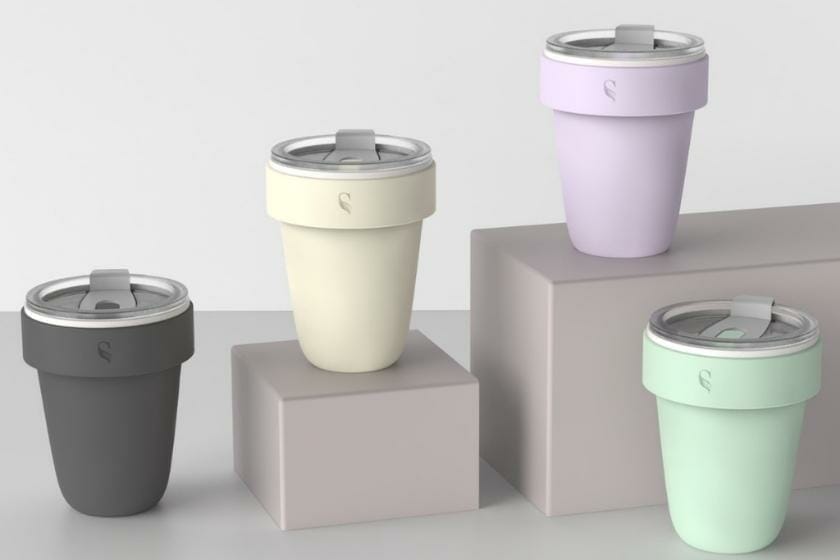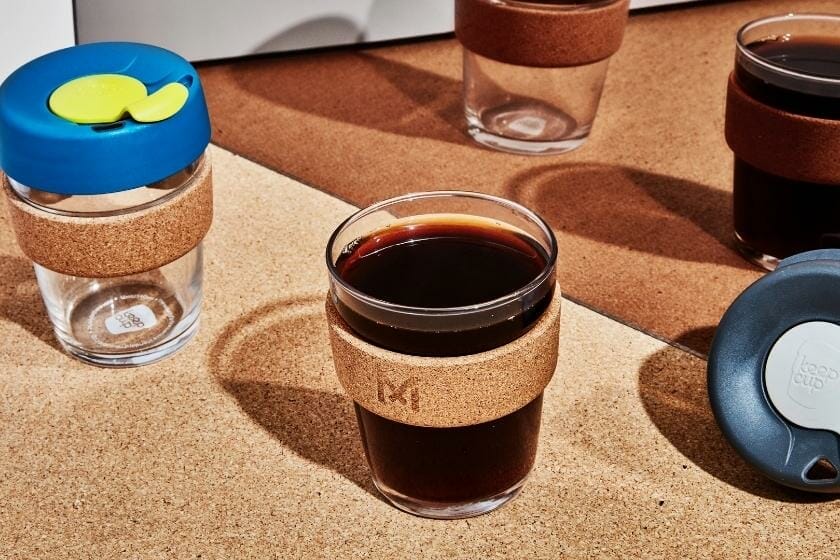Eco-friendly travel mug
Introduction: What is an Eco-Friendly Travel Mug & How Do They Work?
An eco-friendly travel mug is a reusable coffee cup designed to be used with a coffee machine. It allows you to avoid using paper coffee cups or plastic cups. They are usually stainless steel, ceramic, or bamboo and can be dishwasher-safe.
These mugs have been created to help reduce the number of paper cups used in the workplace, public parks, and at home.

This is done by providing an easy-to-carry option for people on the go, giving them a chance to have their favorite hot drink or cold drink without harming the environment. Be it a French vanilla latte or a mocha, these cups have got you covered.
Do you love your morning cup of coffee?
Do you love your morning cup of coffee? Maybe you love it so much that you want to take it wherever you go. If this sounds like something that could be fun for you, we have an excellent suggestion for what type of travel mug to buy.
If we’re talking about eco-friendly travel mugs, there are two key things to keep in mind for coffee fans:
- The material from which the cup is made (the most common options are stainless steel and plastic)
- The ability of the lid or straw attachment to prevent leaks and spills while also being easy enough to drink out of
Does taking your cup to a cafe fill you with dread?
Many people find taking their cup to a cafe fills them with dread. They worry that baristas will judge them or that their cup isn’t as good as the cups from coffee shops.
But what if we could change this? Many cafes care about sustainability just as much as you do—and they’re ready to help you reduce waste!
How can you ensure you’re using an eco-friendly travel cup that cafes and baristas will accept?
- Focus on why your favorite coffee shop won’t accept travel cups and what you can do to get around those problems.
- Cafe staff don’t have time to wash reusable cups of coffee; they are busy making drinks.
- Some cafes don’t accept non-standard travel cups because they are worried about hygiene.
Here are three ways to choose the best coffee cups for your daily caffeine fix.
When you’re looking for an eco-friendly coffee cup, it’s essential to consider the following:
- The size and shape of the cup should be standard. When you’re ordering coffee, you want the barista to be able to put your drink in a cup without having to measure or adjust their workflow. This is a significant factor if you prefer a specific size drink that is not offered by most places (for example, large mocha fraps).
- The materials used are safe and easy to clean. Most reusable travel cups come with lids that can send hot liquid flying if dropped from a height onto another object (which has happened more than once). Covers also help to keep your coffee warm. Caps should also be able to lock shut securely, preventing spills when walking around with them full of hot coffee. Some have handles that fold down when not in use; these are great because they take up less space when packed away but are still comfortable holding onto while drinking out of them!. You can enjoy and drink warm coffee with lid mugs.
- The lining and vacuum insulation inside makes recycling accessible outside of home bins – empty trash on our streets or landfills!. Some mugs also come with double insulation.
Check for a standard coffee cup shape and size.
Before you order your next cup of joe, look at the cup’s shape and size. A standard coffee cup is about 12 ounces or 340ml—that’s about how much liquid fits in one of those little paper cups you get from Dunkin’ Donuts or Starbucks.
If you’re unsure what this means, ask the barista when ordering: “How much do I want? Do I need to add a little bit of water?”
If your cup is too small (less than 8 oz), it’ll be too hot to hold after a few minutes; if it’s too large (more than 16 oz), it’ll be too heavy for the baristas to keep while creating your drink.
There are plenty of reasons why getting an unnecessarily large or small beverage would be inconvenient—and they all boil down to eco-friendliness!

Know what sort of cup lining is best for the environment.
- You need to know that there’s no such thing as a 100% eco-friendly cup. Even if the cup is made of recycled materials, the manufacturing process still creates some waste, so you have to consider all of that when deciding what type of container to buy.
- Some materials are better for the environment than others, though—and it’s essential to know which ones those are so that you can make an informed purchase. Avoid polystyrene or polystyrene-lined cups and avoid polypropylene or polypropylene-lined cups because these will leach styrene into your drink if heated for too long in a microwave or dishwasher.
- Avoid polyethylene or polyethylene-lined cups; they’ll filter bis(2-Ethylhexyl) and adipate into hot drinks after prolonged heating in microwaves or dishwashers (this additive is used as an antioxidant).
- Avoid styrene-butadiene rubber (SBR), Bisphenol A (BPA), and phthalates, all found on lids designed for hot drinks like coffee and tea; these chemicals have been linked to cancer risk when ingested over time. And finally: avoid polycarbonate bottles! These bottles contain bisphenol A (BPA), which has been shown in studies to cause breast cancer cells in lab rats when ingested over time by rodents who were fed shallow doses every day over their entire lifespan.
Verify that your cup is made from safe materials.
When looking for disposable coffee cups, the first thing you should do is verify that it’s made from safe materials.
Some plastics can leach chemicals into food and drinks, which is terrible for your health and the environment.
You should avoid plastics with the numbers 3 and 7 (for example, PVC) and any other type of plastic that uses BPAs or BPSes—these are chemicals known to be toxic in even small doses.
The best cups will have no harmful materials inside them at all!
If you’re looking for a glass coffee cup or steel instead of plastic, plenty of options are available online.
Some possibilities have lids that come off ultimately while leaving the top rim intact; others have removable covers.
5 Tips To Keep Your New Eco-Friendly Travel Mug in Great Condition For Years
- Clean your mug with dish soap and water.
- Do not use harsh chemicals or abrasives on the outside of the mug.
- Avoid using it for anything other than coffee or tea.
- Please do not put it in the dishwasher or microwave.
- Always wash your mug with warm water and mild soap.
You can find an eco-friendly coffee mug that works in cafes and satisfies your love of coffee.
There are many options for reusable travel cups. You can find one that works in cafes and satisfies your love of coffee.
An excellent eco coffee cup should be made from safe materials, fit in a standard cup holder, be easy to clean and be made from safe materials for the environment.
Conclusion: Why We Should All be Using an Eco-Friendly Travel Mug
The conclusion of this paper is to encourage people to use an eco-friendly travel mug. The benefits of using a travel mug include:
-The benefits of using a travel mug are that it is cheaper than buying coffee every day, it is environmentally friendly, and you can drink your coffee on the go.

-The disadvantages of using a travel mug are that they don’t keep coffee hot for as long as some other cups, they are not dishwasher safe, and they can be challenging to clean.
Moreover, you can check out here about How Much Does A Coffee Mug Weigh.
